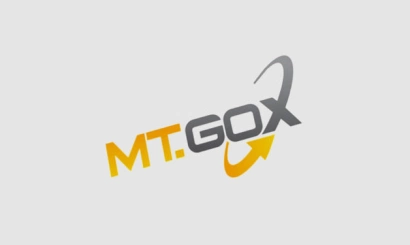Half a billion for mining. Why Tether entered the bitcoin mining market
Tether will invest $500 million in Bitcoin mining and intends to become a leading player in the market
The issuer of the largest stablecoin is diversifying its business and plans to become a leading player in mining. The company's CEO Paolo Ardoino revealed what it is spending money on and what market share it aims to gain

CEO Paolo Ardoino
Tether has set its sights on becoming one of the top Bitcoin miners in the world. The issuer of the largest stablecoin USDT with a capitalization of more than $87 billion is making significant investments in the cryptocurrency mining sector.
In the next six months, the company plans to spend about $500 million both to roll out its own infrastructure and to acquire stakes in mining companies, Paolo Ardoino, the recently appointed CEO of Tether Limited, told Bloomberg in an interview.
Those investments include part of a $610 million credit line that Tether extended this month to German mining company Northern Data AG, after acquiring a stake in it in September. Ardoino said his company is "committed to becoming part of the ecosystem" of Bitcoin mining and is "extremely serious" about choosing locations for equipment or building new substations.
- New business
The new business is distinct from Tether's core business of issuing and managing stablecoins, the largest of which is Tether USD (USDT). The entry of a player with such significant capital into the cryptocurrency mining market could significantly sharpen competition for the limited volume of cryptocurrency, as well as provide Tether with another opportunity to diversify its sources of profit, Bloomberg writes.
Stablecoins are cryptocurrency tokens whose rate is linked to an asset, such as a dollar, euro or an ounce of gold. Their reserves are backed by real assets - fiat currencies, securities, precious metals, etc. The largest of them is Tether USD (USDT), which is issued by Tether Limited. Some exist on multiple blockchain networks, such as Ethereum, Tron, or Solana.
Tether earns interest on U.S. Treasury bonds and other assets held in USDT's $87 billion in reserves. As of Sept. 30, the company had a cash surplus of about $3.2 billion in reserves. According to its quarterly report released on Oct. 31, Tether has already used more than $800 million to invest in Bitcoin and various industry research.
According to Ardoino, Tether is now building mining centers in Uruguay, Paraguay, and El Salvador, with each center having between 40 and 70 MW of capacity. The company aims to increase its share of the Bitcoin network's total computing power to 1%, Ardoino said but declined to predict an exact timeline for reaching that mark. By comparison, the largest publicly traded mining company, Marathon Digital Holdings, has a share of about 4%.
A 1% market share would likely put Tether among the world's 20 largest bitcoin mining companies, according to Jaran Mellerud, CEO of MinerMetrics, a bitcoin mining data and research firm. "Given Tether's importance in the cryptocurrency ecosystem and its financial strength, its market share is likely to grow well above 1% over time," Bloomberg quoted him as saying.
By the end of 2023, Tether expects to reach 120 MW of capacity on its own mining operations, and aims to increase that to 450 MW by the end of 2025, Ardoino said. This is one and a half times higher than the combined capacity of the largest Russian mining company BitRiver on several of its sites. He says Tether has committed about $150 million to the mining operations in which Tether is directly involved, and some of that amount is still being distributed among the new sites.
- Competition
In addition to becoming a miner itself, Tether's intention to invest significant sums in the industry could have an impact on its future competitors. After the fall in digital asset prices last year, miners have faced a shortage of funds.
Two major mining companies, Compute North and Core Scientific, filed for bankruptcy. The companies, which went public during the historic highs in cryptocurrency prices, are selling all of their mined coins to replenish cash flow, taking advantage of bitcoin's recent rise above $37k.
As a private company with high financial turnover even in a bear market, Tether is uniquely positioned to make large-scale investments without having to adjust to market cycles, according to Mellerud of MinerMetrics.
However, the potential challenges facing the mining industry are also relevant to Tether. Growing competition means shrinking profits, and an upcoming bitcoin code update known as halving will lead to a sharp decline in mining revenue next year unless the bitcoin exchange rate shows significant growth.
Bitcoin mining is an energy-intensive process in which miners use specialized devices to validate transactions in the Bitcoin blockchain and be rewarded with new coins. Now, for each block of transactions added to the blockchain, miners receive 6.25 BTC, which is equivalent to about $228,000 at the exchange rate as of Nov. 16. Such remuneration motivates them to keep the network up and running.
The reward is halved every 210,000 blocks as a result of so-called halving, which occurs about once every four years. Miners also receive transaction processing fees, an additional source of revenue that becomes increasingly important as the reward per added block decreases.
Mining complexity, that is, a measure of the total computing power required to produce new bitcoins, has already reached historic highs several times this year as miners continue to plug in new hardware. The more processing power a miner has, the more likely they are to be the one to receive a share of the reward, which is distributed to all participants as an incentive to keep the network running. This gives an advantage to companies with large capital that can allocate additional resources.
Ardoino says Tether is currently evaluating a potential 300MW site, and its existing mining operations are already generating revenue, thanks to Bitcoin's appreciation. The company is also placing equipment in large containers so they can be moved quickly to a new location with cheaper electricity. According to him, the company is "in no hurry" to become a leader in the mining market and is determined to "learn and evolve" in this area.
- Buyers are stepping up their defenses. What will happen to bitcoin in the coming week
- Cryptocurrency exchange Binance has introduced its own Web3 wallet
- Leading altcoins rose in value in early November. What is happening in the market
- SEC has difficulty finding cryptocurrency experts, SEC says
- Musk triggered an influx of new crypto-tokens. They have grown thousands of times
- Creators of SafeMoon crypto project accused of $200 mln fraud
- OpenSea's NFT marketplace valuation drops 90%





_410x245_00e.webp)


